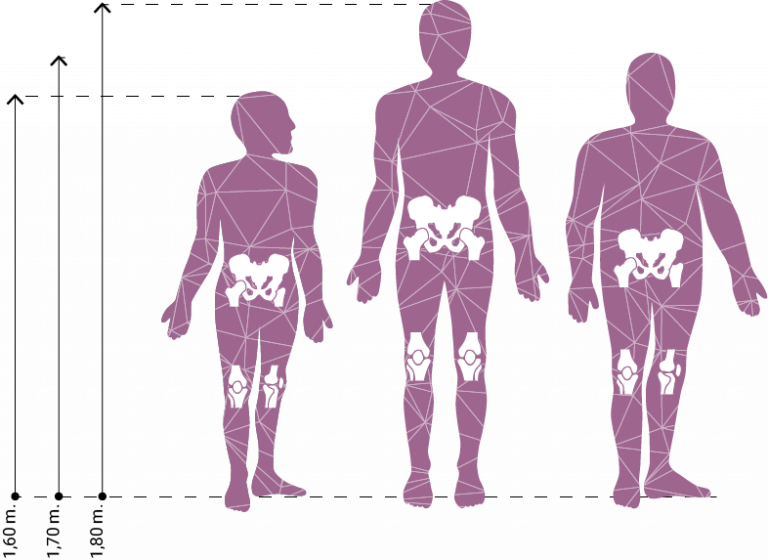
Menu
The height and body mass are key variables in bioarchaeological analysis. Aside from the body shape, these are important data that allow us to reconstruct the individuals’ living standards.
Environmental factors related with human health and diet determine whether an individual will reach one’s genetic height potential.
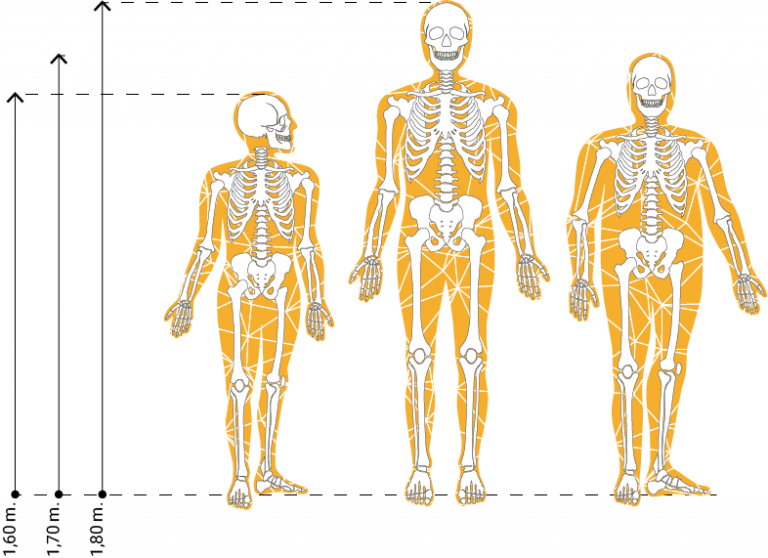
The anatomical method is applied when all bones of the skeleton that contribute to an individual’s height have been preserved.
The anatomical method is more reliable, however its application is not always feasible, due to the partial preservation of the skeleton.
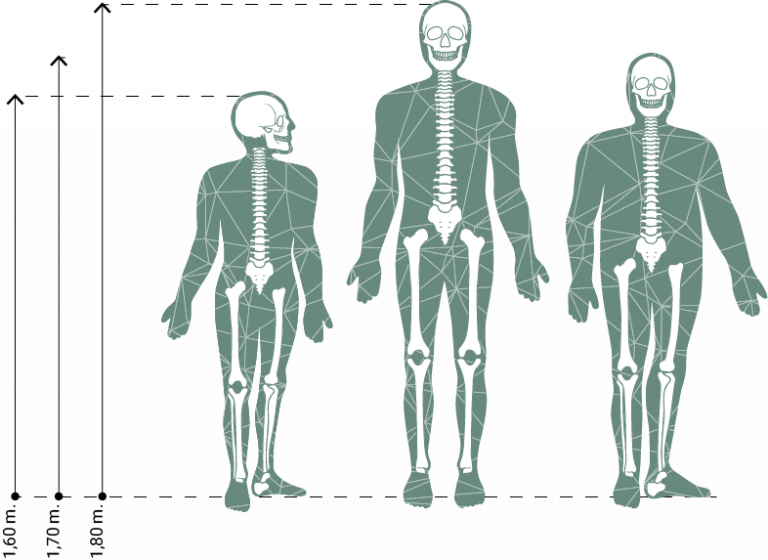
The mathematical method allows us to estimate the height based only on the measurements of long bones, such as the femur or the tibia.
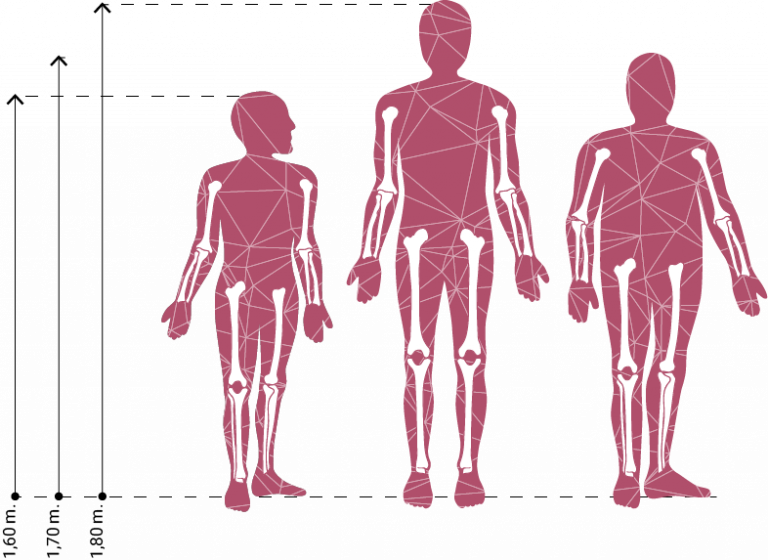
Height is a polygenic trait, i.e. a characteristic that is affected by a large number of different genes, as well as environmental factors.
The genetic method of height determination entails the calculation of a value, based on all height-related genes and the comparison of this value with a reference system. The outcome is the “genetic predisposition” of the individual, i.e. a range of values that indicate one’s height potential.
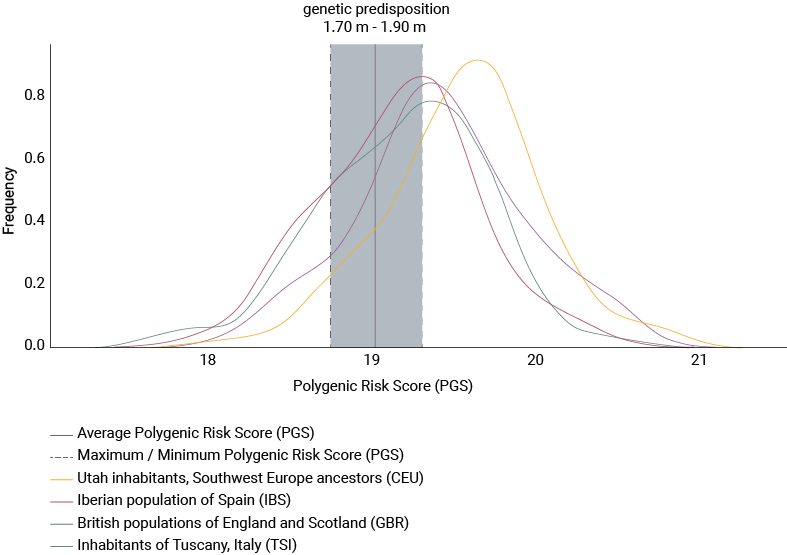
The body mass is yet another characteristic that helps compose the osteobiography of an individual. Taking specific measurements from the femur and pelvis bones, we can reconstruct an individual’s body type.
